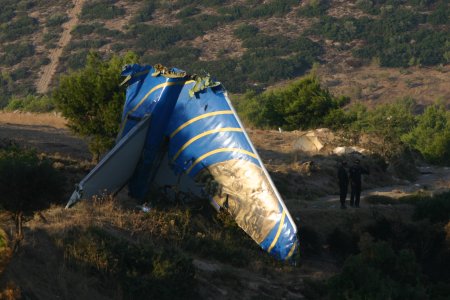Operators of older-variant Boeing 737s will be required to fit new cockpit-warning systems within three years, a measure to prevent the recurrence of the Helios Airways pressurisation crash near Athens six years ago.
The order follows previous changes to procedures, and advisories to crews regarding the wearing of oxygen masks, which followed the crash of the 737-300 after most of its passengers and crew succumbed to hypoxia en route from Larnaca.
Pilots of the flight, in August 2005, failed to recognise the absence of cabin pressure as the aircraft climbed. It flew a pre-programmed route towards Greece on autopilot, before crashing in an uninhabited area when its fuel was exhausted.
 |
|---|
US Federal Aviation Administration investigations turned up 25 instances in which crews misinterpreted a cabin-altitude warning as a configuration warning - even though the latter is disengaged during flight. On the 737, the two warning systems use the same intermittent horn signal.
A final rule requires operators of 741 US-registered Boeing 737s, up to the -500 variant, to install two warning lights in the centre cockpit console of particular aircraft, and activate cabin-altitude and configuration warning lights in others.
"We are issuing this [instruction] to prevent failure of the flight crew to recognise and react properly to a valid cabin-altitude warning and take-off configuration warning horn, which could result in incapacitation of the flight crew due to hypoxia and consequent loss of control the aircraft," says the FAA.
Continental Airlines had claimed that the three-year compliance limit would prove an economic burden, given its fleet of 37 737-500s, and sought an extension to 60 months, which the FAA has rejected. It has similarly rejected a suggestion by Lufthansa to delay the directive, which takes effect on 14 March, pending release of an unrelated service bulletin affecting the same part of the airframe.
Source: Flight International



















